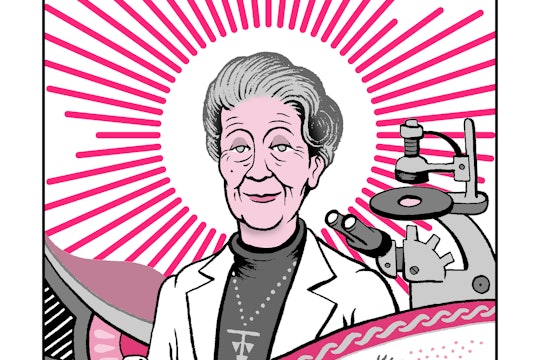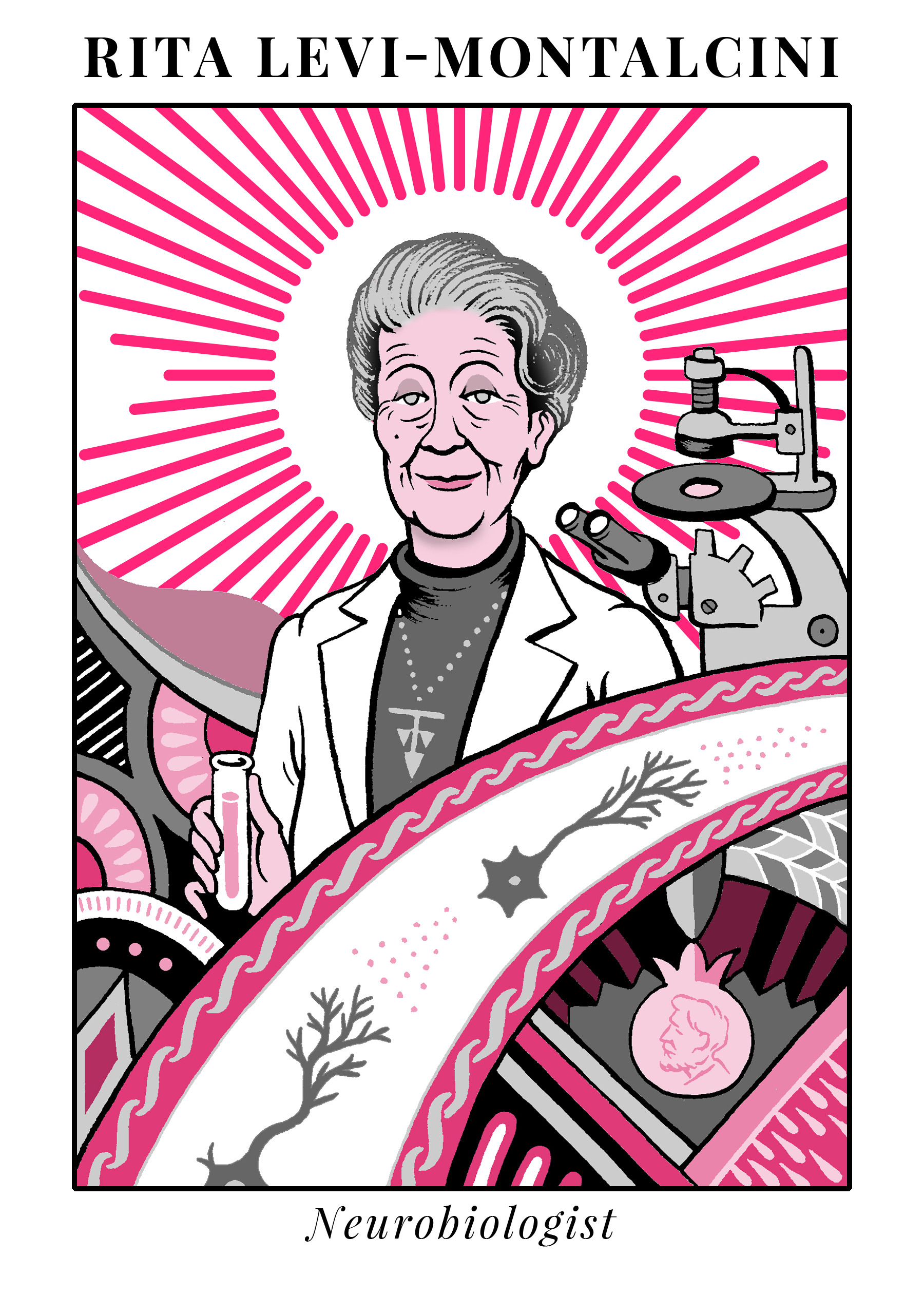
Matteo Farinella
Five facts about Rita Levi-Montalcini, who figured out how neurons grow
She bested anti-Semitism and sexism to have a Nobel-winning career
In some ways, I began my career as a scientist following in the footsteps of Italian neurobiologist Rita Levi-Montalcini (1909-2012). As a child, I spent hours peering through a toy microscope in my bedroom, entranced by the world we cannot see with the naked eye.
Surrounded by artists, including her mother and twin sister, Paola, Levi-Montalcini was likewise drawn to the beauty of neurons, and would spend her life working to discover how the nervous system develops.

Matteo Farinella
Her career as a physician was bookended with tragedy
The death of her nanny Giovanna, from stomach cancer, originally drove Levi-Montalcini to study medicine, with the goal of becoming a physician. Overcoming the misgivings of her traditionalist father, who worried that her studies would interfere with becoming a wife and mother, she enrolled in 1930 at the University of Turin Medical School. Levi-Montalcini was one of only seven women in the medical school, including her cousin Eugenia.
Levi-Montalcini ended her medical career shortly after World War II, when a typhus epidemic hit the refugee camp where she was working with the Red Cross. At its peak, 50 people a day succumbed to the disease. The experience prompted Levi-Montalcini to abandon medicine, citing an inability to remain detached when caring for suffering patients, and to focus instead on her research.
She turned her bedroom into a laboratory during World War II
During medical school, Levi-Montalcini first began her research under anatomist Giuseppe Levi. After graduating in 1936, she continued to work at the university in a neurobiology laboratory until the 1938 publication of Mussolini’s Manifesto of Race, which banned Jewish people from many professions and from the university. These anti-Jewish race laws kept her from treating patients during World War II, but they only slowed down her research progress. Determined to continue, Levi-Montalcini set up a microscope and performed experiments on chick embryos in her own bedroom to keep working. During this time, Levi-Montalcini was limited to publishing abroad or through the Vatican, because Italian journals would not publish the work of a Jewish scientist.
Unraveling the mysteries of the developing nervous system
In 1939, Levi shared a reprint of an article from Vikor Hamburger, a professor at Washington University in St. Louis, with Levi-Montalcini. The article, about how target structures, such as wing precursors in chick embryos, promote the embryonic growth and development of the nerves that control them, inspired Levi-Montalcini. She focused her research efforts on discovering what factor could be responsible for this phenomenon. She worked on this research in her bedroom-turned-laboratory, publishing several papers that expanded upon Hamburger's initial hypothesis. Upon finding her articles after the war, Hamburger was intrigued by her work and invited Levi-Montalcini to join his research group in St. Louis in 1946. Despite planning to stay for only one semester, Levi-Montalcini ended up staying in St. Louis for the next 30 years.
It was there that she began collaborating, in 1953, with Stanley Cohen, a biochemist who would complement her anatomy expertise. Together, they isolated a protein they called Nerve Growth Factor – the aptly named factor responsible for stimulating the growth of neurons. (The duo was awarded the 1986 Nobel Prize in Physiology or Medicine for their work.)
Levi-Montalcini continued to work on growth factors, returning to Italy in 1961 to establish her own research unit at the Italian National Institute of Health. She divided her time between Italy and the United States until she retired in 1979.
No husband. No kids. No regrets
Despite her father’s hopes that his daughters would live quiet lives as wives and mothers, Levi-Montalcini described herself as lacking a maternal sense and attraction to babies, and determined herself to be unfit for domesticity. In a 2006 interview she said “My life has been enriched by excellent human relations, work and interests. I have never felt lonely."
Advocating until the end
In 2001, Levi-Montalcini was appointed an Italian senator for life by the President of the Italian Republic, Carlo Azeglio Ciampi. The prestigious position of senatore a vita is awarded "for outstanding patriotic merits in the social, scientific, artistic or literary field," and only five people may be honored with the position at any given time. Levi-Montalcini asserted in her lifetime that she did not like politics but enjoyed working to improve social problems.
Considering education to be essential for the empowerment and success of women, Levi-Montalcini continued her work as an advocate into her second century of life. She continued to speak at conferences and to work with her foundation, which funds scholarships for women in Africa to pursue their education. She remained a staunch advocate for science and for women’s rights until her death at age 103.
